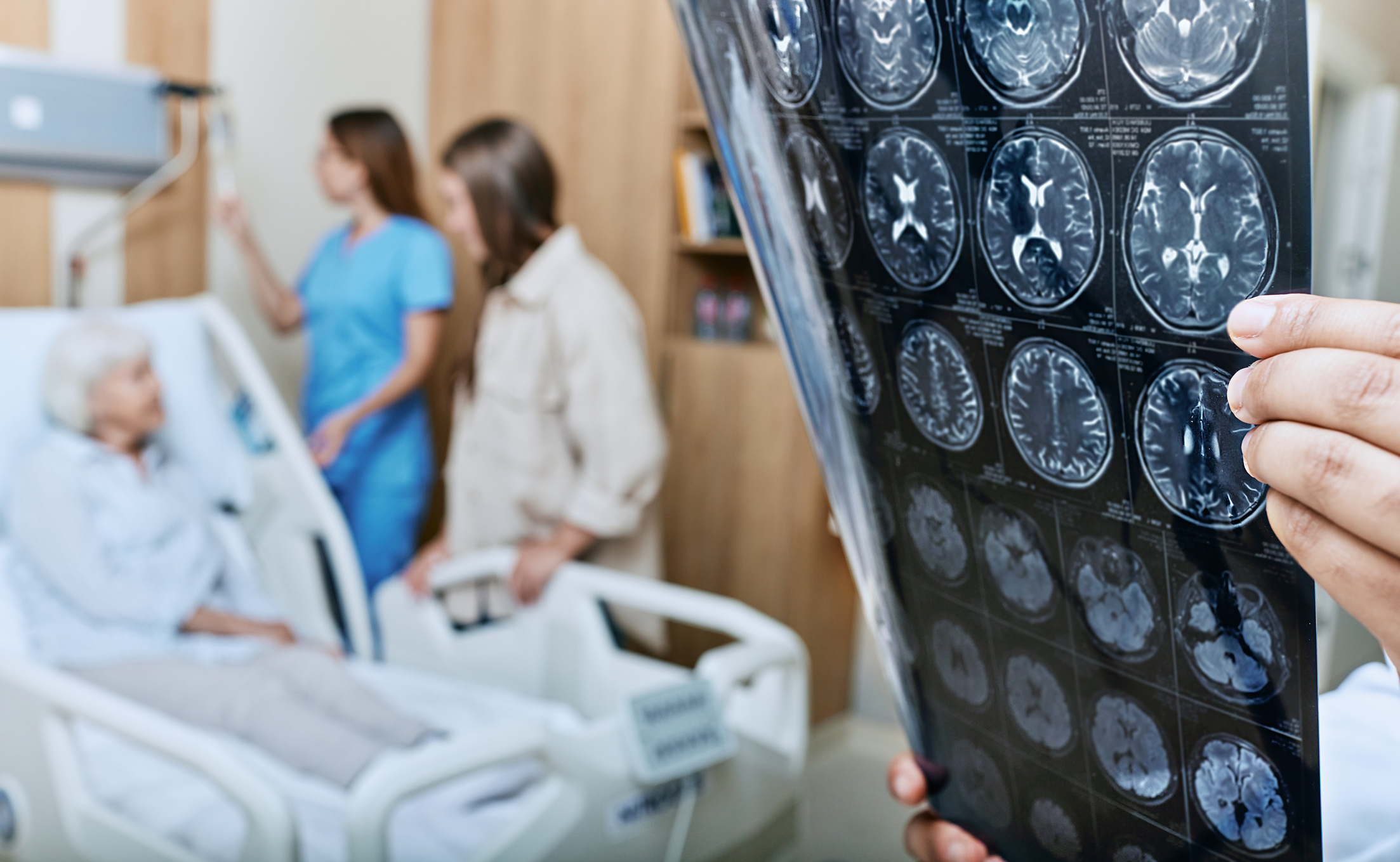Stroke care, no matter where

The system for stroke care around Kentucky is a complex machine with many different moving parts. It involves multiple players — including emergency medical service responders, doctors, nurses, pharmacists, neuropsychologists, and a variety of therapists and other health care providers all of whom must work together at top speed to save lives and improve stroke recovery outcomes — across a large geographic area.
But expertise is concentrated in regional institutions such as UK HealthCare, with many small and medium-size hospitals in rural areas lacking comparable resources.
The Kentucky Neuroscience Institute is helping to fine-tune this (sometimes unwieldy) machine. Using partnerships, collaborations, and cutting-edge technology, Kentucky Neuroscience Institute is implementing new ways to share medical information and expert input in real time at the earliest and most critical stages of stroke treatment; to provide specialized stroke care training for medical staffs in smaller hospitals; and to provide data and analysis to EMS teams and the hospitals they serve.
With these and other initiatives, Kentucky Neuroscience Institute is helping make early-stage stroke treatment faster, more streamlined and more equitable across the Commonwealth. The goal is to provide optimal stroke-related care regardless of where in Kentucky a patient may live.
One of the most expansive and far-reaching of these initiatives is the Stroke Care Network, a group including about 40 small and medium-sized hospitals around the state whose medical staffs receive extensive specialized training from experts at UK HealthCare and Louisville-based Norton Healthcare on how to recognize and respond to stroke cases as quickly and accurately as possible.
“There’s a huge knowledge deficit around strokes, in part because stroke presents in so many different ways,” explained Lisa Bellamy, managing director of the Stroke Care Network. “There’s also a tremendous amount of community education that has to happen because stroke care is so different now.
“If you had a stroke prior to 1996, the response was, ‘Let’s get you into rehab to help you adjust to your new life.’ Now we have so many things we can do with drug therapy and mechanical procedures, but people don’t always know that. I find that many people don’t even know that stroke happens in the brain, which is a big problem when there is such little time to treat a stroke.”
One of the most effective stroke treatments is the thrombectomy, a relatively new surgical procedure in which cerebrovascular neurointerventionalists and their teams remove a blood clot in an artery in the brain.
“It’s proved to be one of the most successful medical procedures ever,” said Dr. Justin Fraser, Surgical Director of the UK HealthCare Comprehensive Stroke Center. “We’re now treating patients who 30 years ago would have been debilitated for the rest of their lives, and some walk out of the hospital a few days later.”
The problem, according to Dr. Fraser, is that the victim of an acute ischemic stroke loses up to 2 million nerve cells every minute, so time is of the essence.
“If you’re close to a hospital like ours, great, but what if you live in rural parts of our state? Those areas don’t perform the procedure.”
To speed up the process of determining whether a thrombectomy is appropriate for a patient, Dr. Fraser and his colleagues now use Viz.Ai, one of several technologies that allow them to remotely review patients’ CT angiogram results within seconds.
“The scans get sent to a cloud, we get a ping on our phone, we look at the film and then text the team at the bedside in any hospital in our network with instructions to activate transfer of the patient to Lexington, if appropriate. It literally takes two or three minutes.”
That emphasis on lightning-quick responses to strokes — this time before the patient even arrives at any hospital — is also a focus of one of several new strategies being explored with funding by a Paul Coverdell National Acute Stroke Program Grant awarded in 2021.
Since then, Kentucky Neuroscience Institute has been gathering data that consolidates previously uncollected data from EMS providers around the state, especially in rural counties with high stroke mortality rates, with data provided by hospitals as part of the American Heart Association’s Get With the Guidelines program.
“It sounds like a straightforward task but it’s actually very complicated,” explained Dr. Larry Goldstein, co-director of the Kentucky Neuroscience Institute. “We’re now about 80 percent matching between the pre-hospital record and the hospital record in stroke cases. Now we can see the impact of, for example, the EMS provider not calling into the hospital and telling them, ‘We have a stroke patient that we’re transporting to your facility.’
"We can now look at the downstream consequences of that, which can lead to delays in getting imaging and treatment done. And we can now produce reports to EMS providers and the hospitals so they can improve their practices.”






